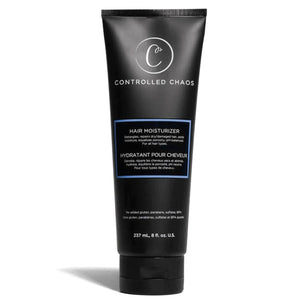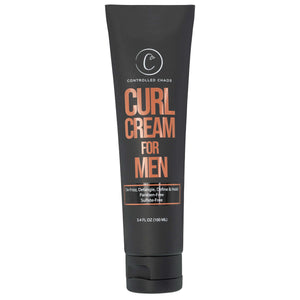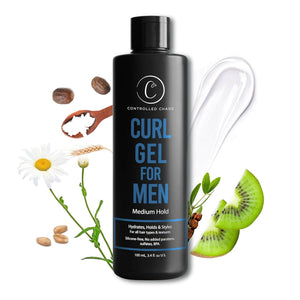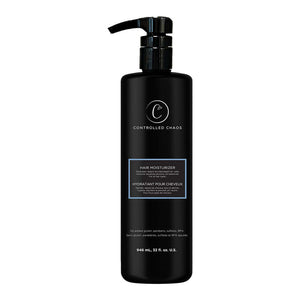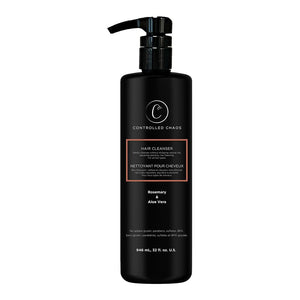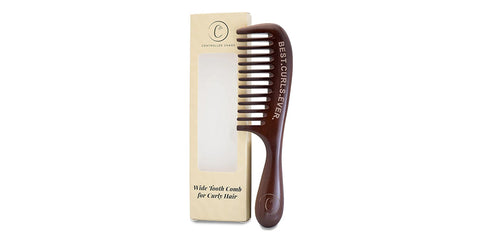

Curly hair is beautiful and unique, but it can often be challenging to maintain. Improper hair care practices and excessive heat styling can damage curly hair. If the bounce and sparkle are gone from your curls, it's time to start restoration. In this blog, we will discuss how to restore curly hair.
Tips to restore curly hair
Protective Hairstyles
Protective hairstyles can promote healthy hair development and minimize damage. Styles like braids and buns reduce hair exposure to environmental stressors. But be careful—tightening them too much might lead to strain.
Satin and Silk
Cotton pillowcases and towels can create friction, which can lead to frizz. Use an old T-shirt or a microfiber towel to dry your hair gently. Replace your pillowcases with satin or silk ones. These materials are gentler on your curls.
Proper Detangling
Curly hair can quickly become tangled, leading to breakage. While your hair is still wet and conditioner-coated, use a wide-tooth comb or your fingers to detangle it. To prevent pulling and breaking your hair, begin at the ends and work your way up.
Balanced Diet
Healthy hair starts from within. Ensure you eat a balanced diet rich in vitamins and minerals, promoting hair health. Foods with omega-3 fatty acids and vitamins A, C, and E can help strengthen your hair. This is the best way to restore curly hair.
Be Patient
Restoring curly hair takes time and consistency. Be patient with your hair and stick to your healthy hair care routine. Over time, you'll start to see improvements in the health and appearance of your curls.
Avoid Harsh Chemicals
Chemical treatments like perming, relaxing, or coloring can be harsh on curly hair, leading to damage and breakage. If you color your hair, opt for a gentle, ammonia-free formula and seek professional help to minimize damage. Embrace your natural curl pattern and avoid chemical processes compromising your hair’s health.
Use Hair Masks
Hair masks can provide an intensive boost of moisture and nourishment. Look for masks containing ingredients like honey, avocado, yogurt, or aloe vera, known for their repairing properties. Depending on your hair's needs, apply a hair mask once or twice a week for a deep conditioning treatment.
Avoid Over-Production
Too many products can weigh down curly hair and lead to buildup, making curls look limp and lifeless. Stick to a minimal, effective routine with critical products that address your hair’s needs. Cleanse your hair thoroughly to remove any product residue.
Incorporate Essential Oils
Essential oils can provide various benefits for curly hair, including added moisture and stimulation of hair growth. Oils such as rosemary and peppermint can be diluted with carrier oil and massaged into the scalp. Do a patch test before using any essential oils to ensure you don’t have an allergic reaction.
Seek Professional Advice
If you’re struggling with severe damage or persistent issues, consider seeking advice from a professional hairstylist. They can provide personalized recommendations based on your hair type and condition, helping you create a tailored restoration plan.
Incorporate Heat-Free Styling
Heat styling can damage curly hair over time, so incorporating heat-free methods is essential for maintaining hair health. To create curls, try different hair styles like braids, twists, or buns. These methods can help you achieve beautiful curls while minimizing damage.
Use a Wide-Tooth Comb
When detangling curly hair, use a wide-tooth comb or your fingers rather than a brush. A wide-tooth comb helps minimize breakage. Always detangle your hair when wet and coated with conditioner to make the process smoother.
Choose the Right Products
While we don’t recommend specific brands, selecting the right products is crucial for restoring curly hair. Look for the best hair products to restore curly hair, as they often contain ingredients that cater to curls' unique needs. Avoid products with harsh ingredients like sulfates, parabens, and silicones, which can strip moisture.
Understand Your Curl Pattern
Different curl patterns require different types of care. Understanding your specific curl pattern—loose waves, tight curls, or coiled ringlets—can help you choose the most effective techniques and products for your hair. Research and experiment with different methods to find what works best for your curl type.
Address Underlying Health Issues
Sometimes, hair issues reflect underlying health problems. If you’re experiencing significant hair loss or persistent issues, it may be worth consulting a healthcare professional to rule out conditions such as hormonal imbalances, nutritional deficiencies, or other health concerns affecting your hair.
Avoid Over-Manipulation
Frequent styling and manipulation can lead to breakage and damage. Limit the number of times you manipulate your hair, and opt for low-manipulation styles requiring minimal touching and adjusting. Allowing your curls to be free and natural can help maintain their health and integrity.
Educate Yourself Continuously
Hair care is an evolving field, and new techniques and products are constantly emerging. Stay informed by reading articles and participating in online communities focused on curly hair care. Continuous education will help you keep up with the latest trends and discover new methods to enhance curls.
Foster a Positive Hair Attitude
Maintaining a positive attitude toward your hair is essential for your overall well-being. Embrace your natural texture and appreciate the unique qualities of your curls. Developing a healthy relationship with your hair can lead to better care practices and a more enjoyable journey.
Conclusion
In short, the above blog has given you the answer to how to restore curly hair. Restoring curly hair involves understanding, patience, and consistent care. By implementing these additional strategies, you can go with repair aspects. Remember that every step you take contributes to your curls' overall health. With dedication and care, your curly hair can be revitalized and shine.
FAQS
How to restore curly hair after bleaching?
Restoring curly hair after bleaching involves deep conditioning treatments to replenish moisture and strengthen the hair. To help repair bleached curls, use hydrating masks and avoid heat styling.
How to restore curly hair naturally?
To restore curly hair naturally, focus on moisturizing and nourishing ingredients like coconut oil and aloe vera. Incorporate regular deep conditioning and avoid harsh chemicals and excessive heat.
How to restore curly hair after heat damage?
Implement a rigorous conditioning routine with reparative treatments to restore curly hair after heat damage. Avoid further heat exposure and use leave-in conditioners to help repair and hydrate your curls.
How do you restore curly hair after keratin treatment?
After a keratin treatment, restore curly hair using sulfate-free shampoos and deep conditioning regularly to maintain moisture balance. Avoid using heat tools and gentle hair care practices to preserve your curls.
How do you restore dry, damaged, curly hair?
Dry, damaged curly hair benefits from intense hydration and nourishment. Use rich conditioners, leave-in treatments, and natural oils to restore moisture and prevent further dryness.
Is it possible to restore curly hair?
Yes, restoring curly hair with consistent care and the right treatments is possible. Focus on hydration, avoid damaging practices, and follow a hair care routine tailored to your curls’ needs.
How can I fix my natural curly hair?
Fixing natural curly hair involves maintaining a proper hydration routine, using gentle products, and avoiding heat and chemical treatments. Embrace your curl pattern with moisturizing and nourishing products to enhance and restore its natural beauty.


